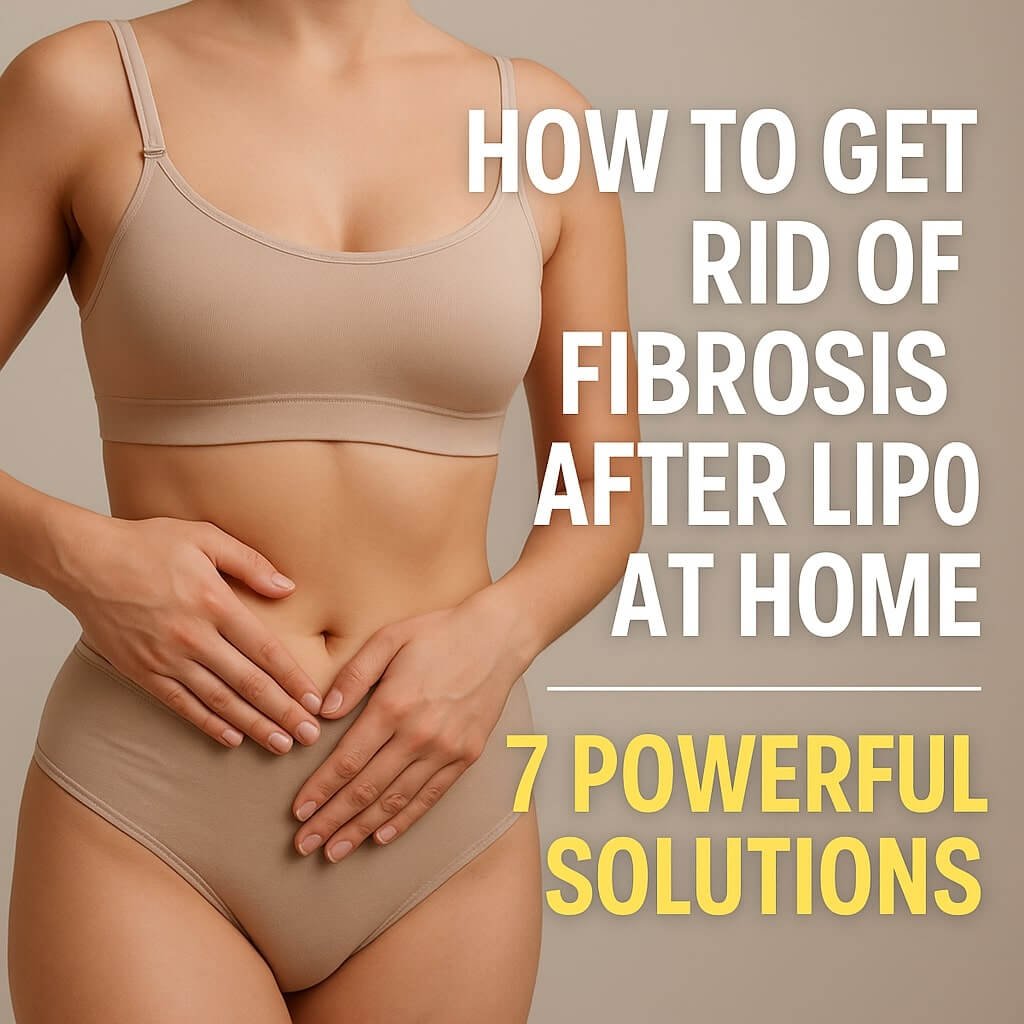Fibrosis refers to the formation of excess scar tissue, which can occur as a result of an injury or surgery like liposuction. During liposuction, small incisions are made, and fat is removed from targeted areas, leading to trauma in the surrounding tissues. While the body naturally heals by forming scar tissue, excessive fibrosis can occur when the healing process goes awry. This scar tissue can become thickened and form hard lumps beneath the skin, often leading to unsatisfactory cosmetic results and discomfort.
Why is Fibrosis a Concern After Lipo?
Fibrosis is a major concern after liposuction for several reasons:
- Aesthetic Impact: The formation of fibrous tissue can cause uneven skin texture, creating bumps, lumps, or hard areas that make the skin appear lumpy or misshapen.
- Prolonged Recovery: It can delay the overall healing process, making you feel like your body isn’t healing properly.
- Discomfort and Pain: Fibrosis can also lead to tightness, discomfort, or pain in the treated areas, which can interfere with everyday activities and the enjoyment of your results.
By understanding why fibrosis occurs and what it looks like, you can take proactive measures to address it.
Signs and Symptoms of Fibrosis After Liposuction
Recognising the signs of fibrosis early on is crucial for treating it effectively. Here are some common symptoms:
Hard Lumps and Nodules
Fibrosis often appears as hard lumps or nodules under the skin where fat was removed. These lumps may feel firm or rubbery to the touch.
Skin Tightness and Discomfort
The formation of fibrous tissue can make the skin feel tight or stiff in the affected area. This discomfort can vary from mild to severe, especially during physical activity.
7 Powerful Ways to Get Rid of Fibrosis After Lipo at Home
Here are seven effective ways to help reduce fibrosis and improve your recovery post-liposuction.
1. Massage Therapy
Lymphatic drainage massage is one of the most popular methods for reducing fibrosis. This type of massage helps to promote circulation, reduce swelling, and encourage the breakdown of scar tissue. Regular massage can soften the lumps caused by fibrosis and improve the overall texture of your skin.
2. Topical Creams and Gels
Several creams and gels may help break down scar tissue and improve the elasticity of the skin. Products containing ingredients like silicone gel, Vitamin E, and arnica are beneficial for fibrosis after liposuction. These products can help soften scar tissue and reduce the appearance of fibrosis over time.
3. Dry Brushing Technique
Dry brushing involves using a soft-bristled brush to gently exfoliate your skin. This technique can stimulate circulation, increase lymphatic drainage, and help reduce the appearance of fibrosis by preventing the buildup of scar tissue. It’s best to dry brush in the morning, before showering, using circular motions on the affected areas.
4. Compression Garments
Wearing compression garments after liposuction is critical for reducing fibrosis. These garments help provide consistent pressure on the skin and underlying tissues, preventing excessive scar tissue formation. They can also promote the re-contouring of the treated area, leading to smoother skin post-surgery.
5. Exercise and Movement
Regular movement and exercise help prevent fibrosis by improving circulation and encouraging the breakdown of scar tissue. Light activities like walking, swimming, or gentle stretching can stimulate blood flow and lymphatic drainage, both of which are key for minimising fibrosis.
6. Hydration and Nutrition
Maintaining proper hydration and a nutrient-rich diet is vital for the healing process. Drinking plenty of water helps flush toxins from the body and supports skin elasticity. Foods rich in vitamins C and E, omega-3 fatty acids, and zinc can promote healing and reduce inflammation, helping to minimise fibrosis.
7. Heat and Cold Therapy
Alternating between heat and cold treatments can help reduce swelling and alleviate discomfort caused by fibrosis. Applying a warm compress can increase blood flow to the area, while cold therapy can reduce inflammation and pain. This combination can be effective for managing fibrosis symptoms.
When to Seek Professional Help for Fibrosis
While many of the methods above can be effective for treating fibrosis at home, it’s important to know when to seek professional help. If your fibrosis is severe, causing significant discomfort or not improving with home treatments, it’s best to consult with your surgeon or a qualified professional. In some cases, physical therapy or specialised treatments such as laser therapy or liposuction revision surgery may be necessary to fully address the issue.
Frequently Asked Questions (FAQs)
1. Can I prevent fibrosis after liposuction?
While it may not be possible to completely prevent fibrosis, using compression garments, massaging the treated areas, and following your surgeon’s aftercare instructions can reduce your risk.
2. How long does it take for fibrosis to go away?
The duration of fibrosis varies from person to person, but with consistent care, most people notice significant improvement within 3-6 months after liposuction.
3. Is massage therapy effective for treating fibrosis?
Yes, lymphatic drainage massage and scar tissue massage can significantly help reduce fibrosis by softening the lumps and promoting circulation.
4. Can I exercise after liposuction to prevent fibrosis?
Yes, gentle exercises like walking or stretching can help reduce fibrosis. However, you should avoid intense physical activity until your surgeon clears you to do so.
5. How often should I use topical creams for fibrosis?
Topical creams should be applied regularly as directed on the product label or as advised by your healthcare provider. Most people benefit from using these creams daily for several months.
6. When should I contact my surgeon about fibrosis?
If you notice significant pain, unusual lumps, or no improvement despite home treatments, it’s time to contact your surgeon to discuss further options.
Conclusion
Fibrosis after liposuction can be a frustrating issue, but with the right care and treatment methods, you can effectively reduce its impact. By using the methods outlined in this guide, you can accelerate your recovery, reduce scar tissue, and achieve smoother, more even skin. Remember, always consult with your healthcare provider before starting any new treatments to ensure they are safe for your specific case. Keep a positive mindset, stay consistent, and you’ll soon see improvements in your healing journey.













